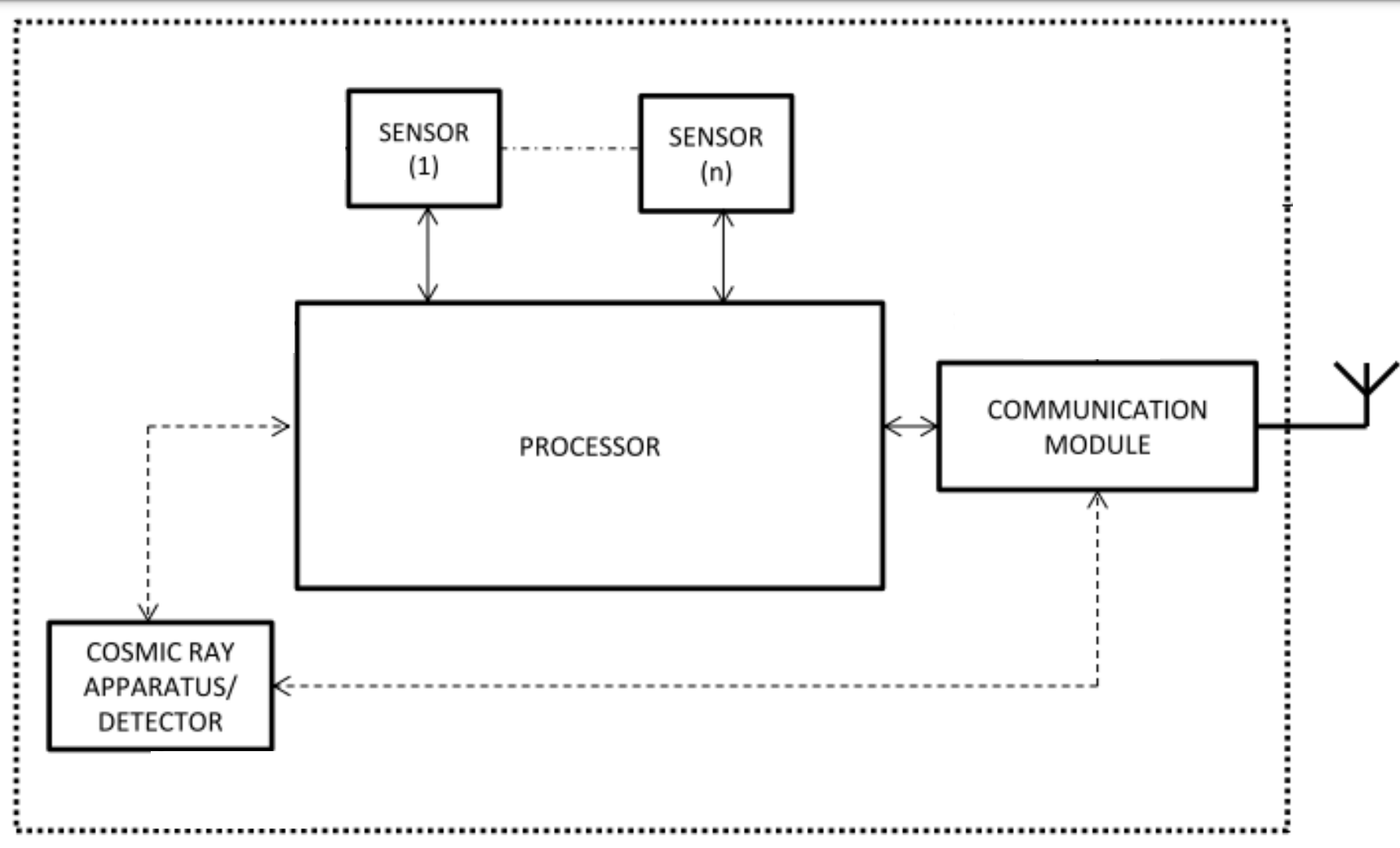The invention provides an apparatus for measuring cosmic ray flux integrated into a radiosonde telemetry system. It consists of a sensor that detects cosmic rays, producing a reverse current proportional to the energy or charge of the rays. This current is processed through a series of components (charge amplifier, level shifter, non-inverting amplifier, Schmitt trigger) to produce digital pulses, which are logged and transmitted by a microcontroller to a base station for analysis.
Existing radiosonde telemetry systems only measure parameters like temperature, humidity, wind speed, and pressure. There is a need to measure cosmic ray flux, which is important for studying atmospheric stability and cloud formation. Traditional cosmic ray detectors are heavy, delicate, and expensive, making them impractical for high-altitude radiosonde use. This invention addresses the problem by providing a lightweight, cost-effective apparatus that can be integrated into radiosondes without exceeding weight limits.
- Lightweight and cost-effective design suitable for integration into standard radiosondes.
- Can measure cosmic ray flux without exceeding the weight limits imposed on radiosonde units.
- Provides real-time data transmission to a base station for analysis.
- Can be retrofitted into existing radiosonde units or adapted for other applications.
The prototype consists of a radiosonde unit equipped with various atmospheric sensors and the cosmic ray flux measurement apparatus. The key components include the PIN photo-diode sensor, charge amplifier, level shifter, non-inverting amplifier, Schmitt trigger, and microcontroller. The entire system weighs approximately 385 grams, well within the typical 500-gram limit for radiosondes.
The sensor was tested with the help of balloon launches done on a regular basis by Indian Institute of Tropical Meteorology, Pune (IITM-Pune). This product could be commercialized and used by various agencies to integrate it with their weather balloon and collect meteorological data.
6
By enabling the measurement of cosmic ray flux in the upper atmosphere, this invention contributes to a better understanding of atmospheric processes, which can improve weather forecasting and climate models. Additionally, it supports scientific research in fields like space weather and high-altitude physics, potentially leading to advancements in technology and our understanding of the Earth's atmosphere.
Atmospheric research and monitoring, Weather forecasting and meteorological studies, Space weather studies, High-altitude scientific experiments.
- Atmospheric research and monitoring.
- Weather forecasting and meteorological studies.
- Space weather studies.
- High-altitude scientific experiments.
Geography of IP
Type of IP
2929/MUM/2015
466943

